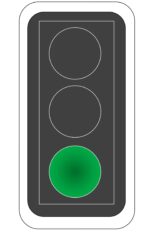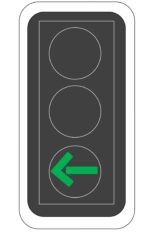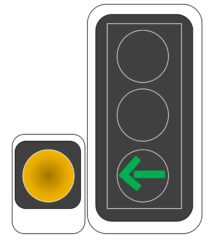Traffic lights

Sven Meier
Driving instructor and president
of the Zug Traffic School
Who doesn’t know a SchlauMeier? However, a SchlauMeier is by no means just a know-it-all, but a person who convinces with well thought-out contributions and understandable explanations and thus enriches his environment.
This is precisely the intention of Sven Meier, driving instructor and president of the Zug traffic school, in this multifaceted column
Traffic signals regulate the flow of traffic and ensure clarity as to who has priority at junctions. This control
contributes to the smooth flow of traffic.
For example, public transport is prioritised and pedestrians are given sufficient time to cross the road safely. The three different light signals that we encounter on our daily journeys by car are explained below.
It is interesting to note that the duration of the orange phase can vary at different traffic lights. Sometimes you have to brake hard during an orange phase so that you don’t drive through the traffic lights on red. At other traffic lights, it is often sufficient to cross the junction calmly. This raises the question of whether there is a regulation that determines how long the orange phase must last. This regulation does indeed exist and is laid down in Swiss standard 640 837.
Orange phase for motor vehicles
For traffic lights on roads intended for cars, the Swiss standard stipulates the following duration for the orange phase:
At a maximum speed of 50 km/h or less, the orange phase must be three seconds. At a maximum speed of 60 km/h it is four seconds, at 70 km/h and above it is five seconds. If a road with a speed of 50 km/h meets a road with a speed of 60 km/h, the orange phases of the traffic lights vary accordingly.
Orange phase for pedestrians
For pedestrians, the orange phase must be at least two and no more than eight seconds long. It must also last long enough for pedestrians to cross two thirds of the road at a walking speed of 1.2 metres per second. Together with the prescribed green phase of at least four seconds, pedestrians must therefore have at least six seconds to cross the road safely. However, the authorities have the option of adjusting these times, for example to make it easier to cross in front of schools or retirement homes.
Regulations for red and green phases
For pedestrians and cars, the same requirements apply for green and red:
The green phase must last at least four seconds, the red phase at least two seconds. However, the municipalities also have the option of extending these phases if necessary in order to better control the flow of traffic.
On-demand traffic lights
At some pedestrian crossings, there are buttons that signal to the traffic lights that someone wants to cross the road. These so-called ‘demand lights’ signal the need when a pedestrian wants to cross the road. The signal is then integrated into the switching cycle of the traffic light system and switched to green for pedestrians at the next opportunity. However, there are also traffic lights where the red and green phases are controlled automatically so that no push-button is required. Whether a traffic light is equipped with a push-button or not depends on whether the pedestrian can control it specifically or whether the green phase is switched at the same time as the car traffic light.
Green full light

A full green light clears the road for traffic. When turning, give way to oncoming traffic and pedestrians or users of vehicle-like equipment on the crossroads.
Green arrows

Green arrows allow traffic in the indicated direction. Oncoming traffic and pedestrians on the crossroads have a red light. The driver may only drive through the junction in the direction of the green arrows.
Arrow with flashing light

If a green arrow gives the go-ahead and an amber light flashes at the same time, oncoming traffic and pedestrians or users of vehicle-like equipment have right of way on the crossroads.



